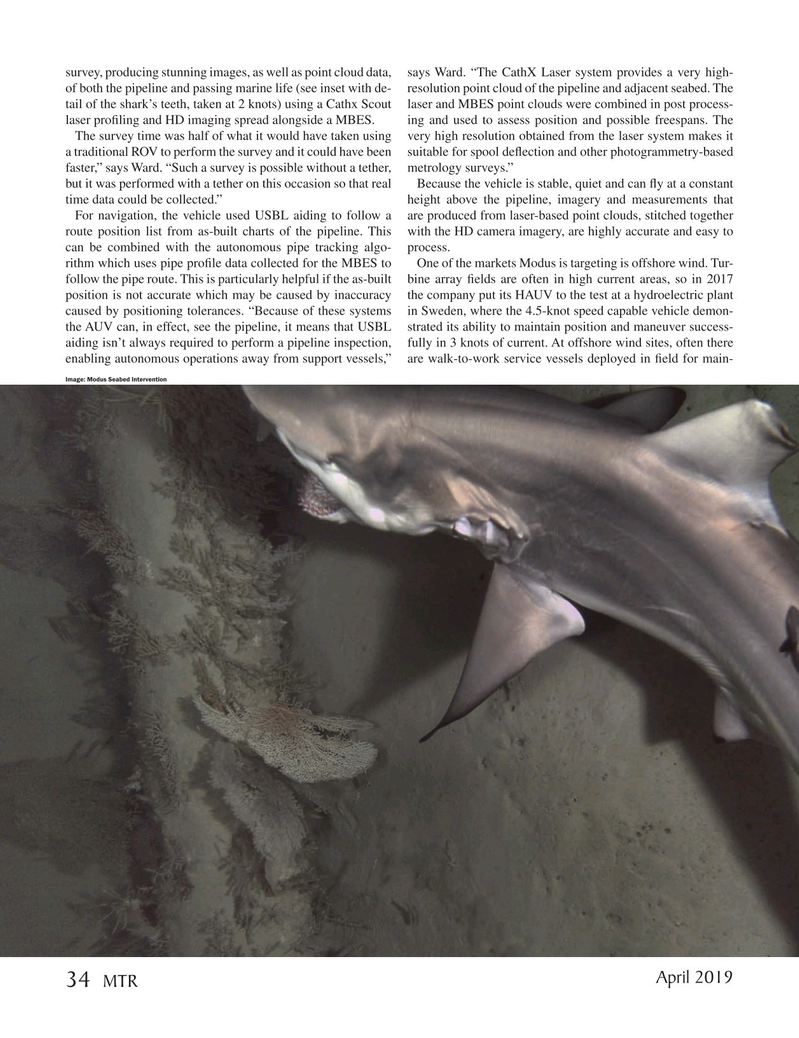
Page 34: of Marine Technology Magazine (April 2019)
Ocean Energy: Oil, Wind & Tidal
Read this page in Pdf, Flash or Html5 edition of April 2019 Marine Technology Magazine
survey, producing stunning images, as well as point cloud data, says Ward. “The CathX Laser system provides a very high- of both the pipeline and passing marine life (see inset with de- resolution point cloud of the pipeline and adjacent seabed. The tail of the shark’s teeth, taken at 2 knots) using a Cathx Scout laser and MBES point clouds were combined in post process- laser pro? ling and HD imaging spread alongside a MBES. ing and used to assess position and possible freespans. The
The survey time was half of what it would have taken using very high resolution obtained from the laser system makes it a traditional ROV to perform the survey and it could have been suitable for spool de? ection and other photogrammetry-based faster,” says Ward. “Such a survey is possible without a tether, metrology surveys.” but it was performed with a tether on this occasion so that real Because the vehicle is stable, quiet and can ? y at a constant time data could be collected.” height above the pipeline, imagery and measurements that
For navigation, the vehicle used USBL aiding to follow a are produced from laser-based point clouds, stitched together route position list from as-built charts of the pipeline. This with the HD camera imagery, are highly accurate and easy to can be combined with the autonomous pipe tracking algo- process.
rithm which uses pipe pro? le data collected for the MBES to One of the markets Modus is targeting is offshore wind. Tur- follow the pipe route. This is particularly helpful if the as-built bine array ? elds are often in high current areas, so in 2017 position is not accurate which may be caused by inaccuracy the company put its HAUV to the test at a hydroelectric plant caused by positioning tolerances. “Because of these systems in Sweden, where the 4.5-knot speed capable vehicle demon- the AUV can, in effect, see the pipeline, it means that USBL strated its ability to maintain position and maneuver success- aiding isn’t always required to perform a pipeline inspection, fully in 3 knots of current. At offshore wind sites, often there enabling autonomous operations away from support vessels,” are walk-to-work service vessels deployed in ? eld for main-
Image: Modus Seabed Intervention
April 2019 34
MTR
MTR #3 (34-49).indd 34 4/10/2019 4:23:02 PM

 33
33

 35
35
